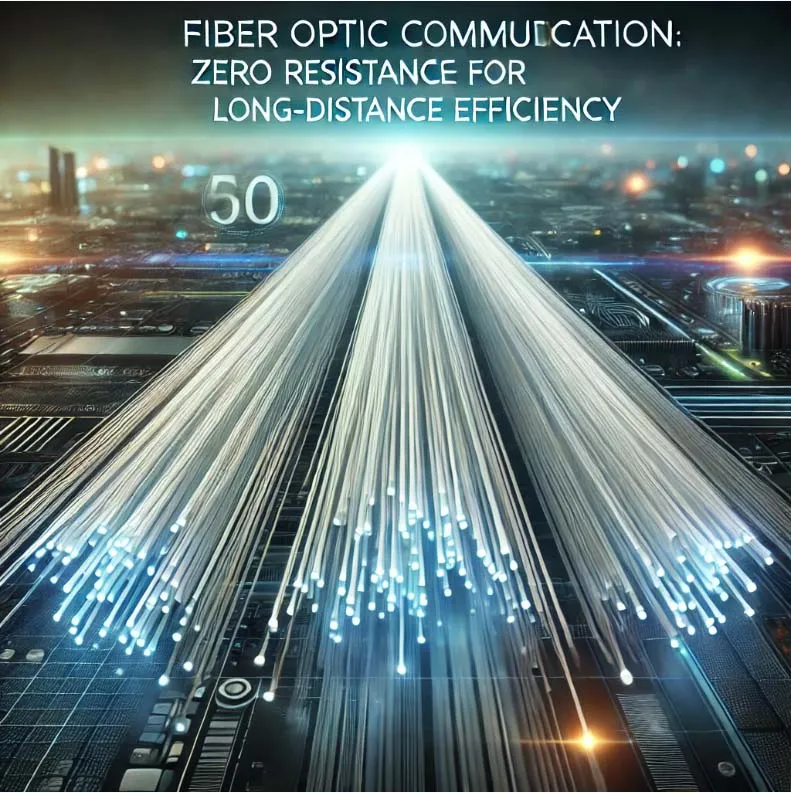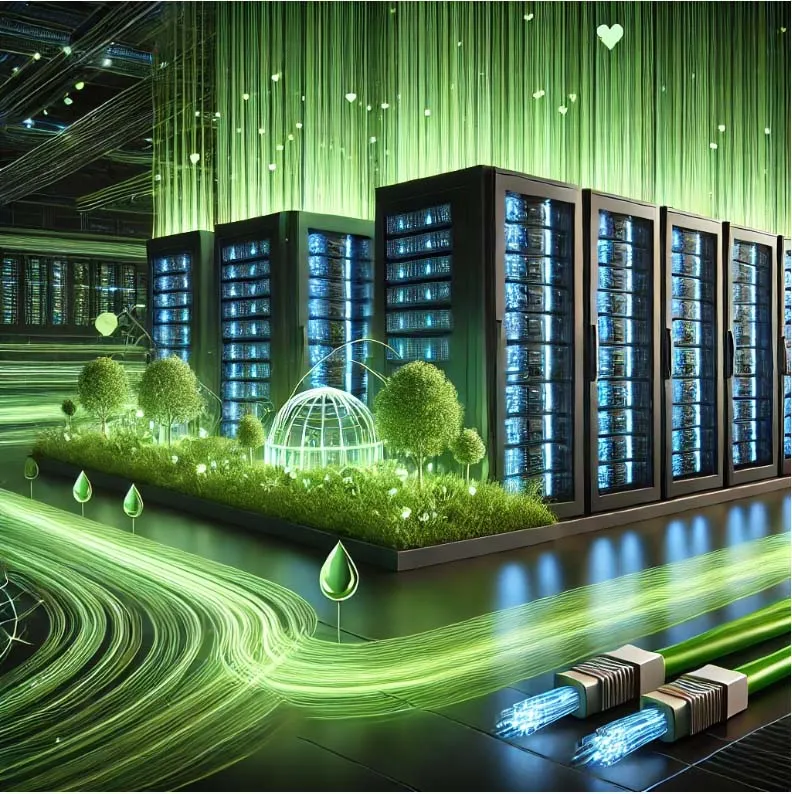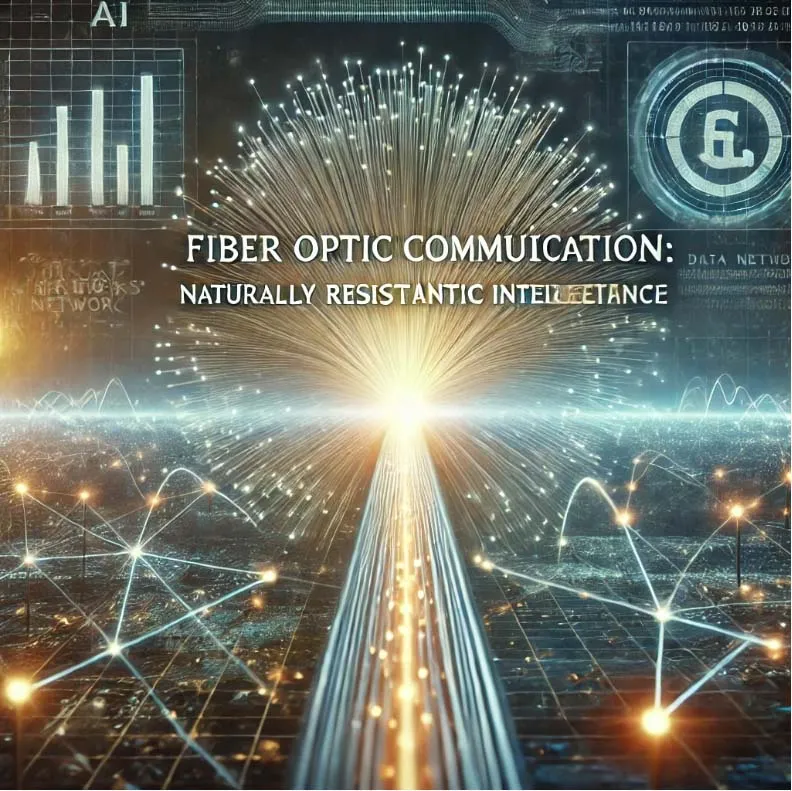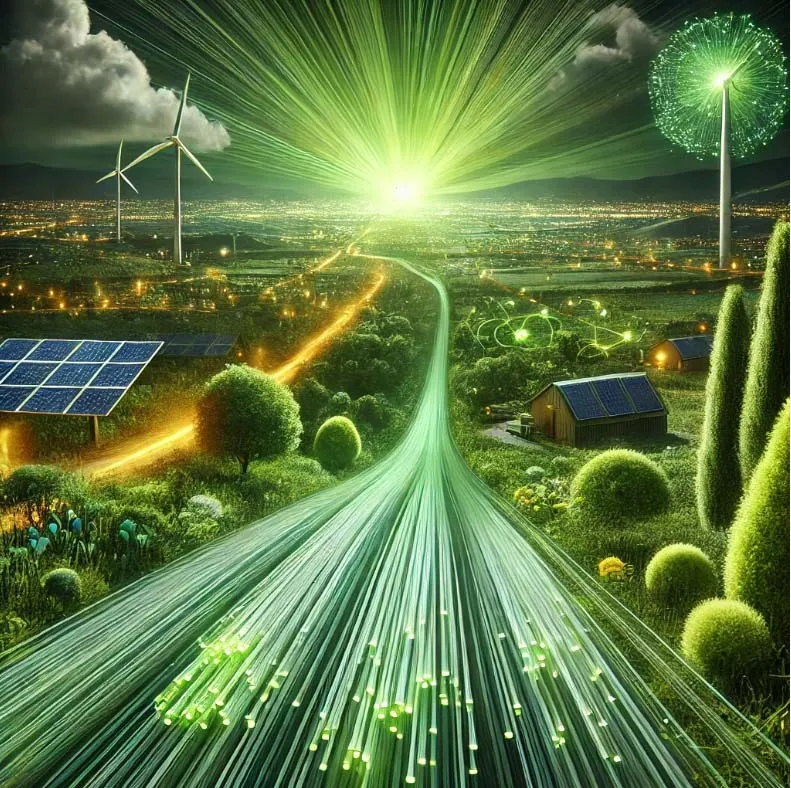With the rapid advancement of digitalization and informatization, the demand for high-speed, low-energy data transmission has reached unprecedented levels worldwide. As AI technology deepens and the scale of data centers expands, traditional copper cable networks have begun to reveal limitations in energy consumption and transmission stability. In this wave of communication technology innovation, fiber optic communication, with its unique advantages of “zero resistance” and “low energy consumption,” has become a key driver of the new era of sustainable data transmission.
Fiber Optic Communication: Zero Resistance Enables Long-Distance, High-Efficiency Transmission
Fiber optic communication uses light signals to transmit data, relying on optical fiber as a medium where light waves experience almost no resistance loss during transmission. This characteristic allows fiber optics to achieve long-distance transmission without consuming more energy, significantly reducing the need for signal relays and power amplification compared to copper cables. Light signals can maintain extremely low attenuation over distances of tens or even hundreds of kilometers, completely breaking the limitations of traditional cables in long-distance transmission. This not only means lower network maintenance costs but also provides a cleaner and more efficient pathway for global data transmission.
In practical applications, the long-distance and high-speed advantages of fiber optic communication are particularly important for AI and big data. AI algorithms require processing massive amounts of data, which are often distributed across different physical servers and data centers worldwide. Fiber optics ensure that data can be transmitted between different regions quickly and with low loss, allowing AI models to access and process data in real time, thereby improving overall computational efficiency and reducing response time.
Low Energy Consumption: The Green Foundation for Data Centers and AI Applications
As the number and scale of data centers grow rapidly, their energy consumption has gradually become a major source of global carbon emissions. Statistics show that traditional data centers consume approximately 2% to 3% of global electricity, a proportion that will continue to rise in the coming years. Fiber optic communication technology provides an efficient solution to build an energy-saving network system for data centers by significantly reducing network energy loss.
The unique advantage of fiber optic communication in reducing energy consumption is evident not only in its lack of electrical resistance and heat production during transmission but also in its overall lower equipment maintenance and cooling needs. In contrast, traditional copper cable networks require frequent power amplifiers and complex cooling systems to reduce heating, consuming large amounts of energy. The nature of fiber optics allows for high-density transmission paths, reducing energy loss and thus effectively controlling the carbon emissions of data centers. The application of fiber optic technology not only saves network operation costs but also enables low-carbon data transmission.
Immunity to Electromagnetic Interference: Reliable Communication for AI and IoT
As AI and the Internet of Things (IoT) continue to develop, the reliability and security of network communications have become urgent issues. Another advantage of fiber optic communication is its natural resistance to electromagnetic interference. This benefit allows fiber optics to transmit high-quality data even in complex environments, unaffected by electromagnetic interference from surrounding electronic devices. In fields that require high-precision data transmission, such as AI training, smart manufacturing, and remote healthcare, fiber optic communication offers reliable and secure communication assurance.
In data centers and AI scenarios, where data volumes are large and real-time requirements are high, any interference in the transmission process could impact the accuracy and response time of AI systems. Fiber optic technology avoids the risk of data loss and delay caused by electromagnetic interference, ensuring stable and secure data communication. This stability offers unparalleled support for AI applications, ensuring real-time data updates and synchronized processing capabilities, serving as an essential pillar in the intelligent world of the future.
A Green Communication Solution for Sustainable Development
Driven by the global trend toward low-carbon, green development, the application of fiber optic communication technology is undoubtedly a sustainable solution that meets future needs. Compared to traditional telecom networks, fiber optics not only provide faster transmission speeds with lower losses but also have less environmental impact during manufacturing and operation. Fiber optic materials are mostly made from silicon dioxide, free of harmful substances, with strong degradability and potential for resource recycling, aligning with the green concept of sustainable development.
For businesses, the widespread adoption of fiber optic technology can effectively reduce carbon footprints, meeting the increasingly stringent global carbon emission policies and enhancing corporate social responsibility. In the future, as fiber optic technology continues to upgrade, data centers, AI computation, and IoT applications will enter a new era of energy-efficient, environmentally friendly operation, contributing to the global communications industry’s green transition.
Fiber optic communication technology not only builds an efficient, low-energy modern data transmission network but also provides a solid foundation for the sustainable development of AI technology. As an ideal communication medium with zero resistance, low energy consumption, and immunity to electromagnetic interference, fiber optics will lead data centers and intelligent technology toward low-carbon and green solutions. Facing the demands of the future, the innovation and development of fiber optic communication will further drive the pace of global informatization, paving the “highway” to a green future.





